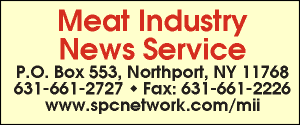
020829 Consumer Prices Up 0.1 Percent In JulyAugust 22, 2002Washington (AP) - Consumer inflation nudged up 0.1% in July as falling prices for clothes and air fares helped to blunt rising costs for gasoline and medical care. The tiny advance in the Consumer Price Index, the government's most closely watch inflation gauge, last month matched June's increase, the Labor Department reported. In another report, the Commerce Department said housing construction in July fell 2.7% for the second month in a row, another sign that the economic recovery is losing momentum. Home building's performance in July was weaker than the 0.5% increase some economists were forecasting. The latest reading on the CPI, on the other hand, was better than the 0.2% rise many analysts were expecting and provided fresh evidence that inflation remains under control. That's good news for Federal Reserve Chairman Alan Greenspan and his colleagues because tame inflation gives them leeway to keep interest rates low in an effort to help the struggling economic recovery get on a firmer footing. Fed policy-makers decided to hold rates steady at 41-year lows, but opened the door to future reductions if economic conditions warrant. "Inflation looks good. It is not even flashing yellow on the Fed's radar screen and that's good. That's promising," said Richard Yamarone, an economist with Argus Research Corp. For consumers, one of the few benefits of the lackluster recovery is that many companies have little leeway to raise prices. And companies, concerned about whether Americans' appetites will hold up amid stock market turmoil and eroding consumer confidence, have continued to discount merchandise and offer other incentives, providing shoppers with some bargains. In July, clothing prices fell 1%, the biggest decline since April. Air fare costs went down by 1.3%, the largest drop since November. Prices for new cars and trucks were flat. Energy prices, however, rose by 0.4% in July, after being unchanged the month before. Falling prices for electricity and natural gas were swamped by a 1.5% increase in gasoline prices and a 0.9% rise in fuel oil costs. Food prices edged up by 0.2% last month, after a tiny 0.1% increase in June. Lower prices for beef, pork, fruit and dairy products tempered higher prices for vegetables and poultry. Excluding food and energy prices, the "core" rate of inflation rose 0.2% in July, following a 0.1% gain. One of the reasons behind the increase was a sizable 0.7% rise in medical care costs, the largest advance since May 1993. Medical costs have continued to rise despite the sputtering economy, hitting Americans in their pocketbooks and wallets. So far this year, medical care costs have risen at an annual rate of 5%. In contrast, consumer prices as a whole have gone up at a rate of 2.5% during the same period. As part of the CPI report, the government debuted a new way of measuring consumer prices in an effort to address a long-standing criticism that the existing index overstates inflation. Under the new measure, called a superlative or chain consumer price index, consumer prices were flat in July. That compared with the 0.1% increase reported for the regular CPI. The new index won't replace the current CPI. The new measure, some five years in the making, is intended to better capture how consumers, reacting to rising prices for a specific product or service, may shift buying to a different, cheaper priced product. For instance, responding to a spike in the price of apples, consumers shift to oranges, a process called "substitution."
E-mail: sflanagan@sprintmail.com |

